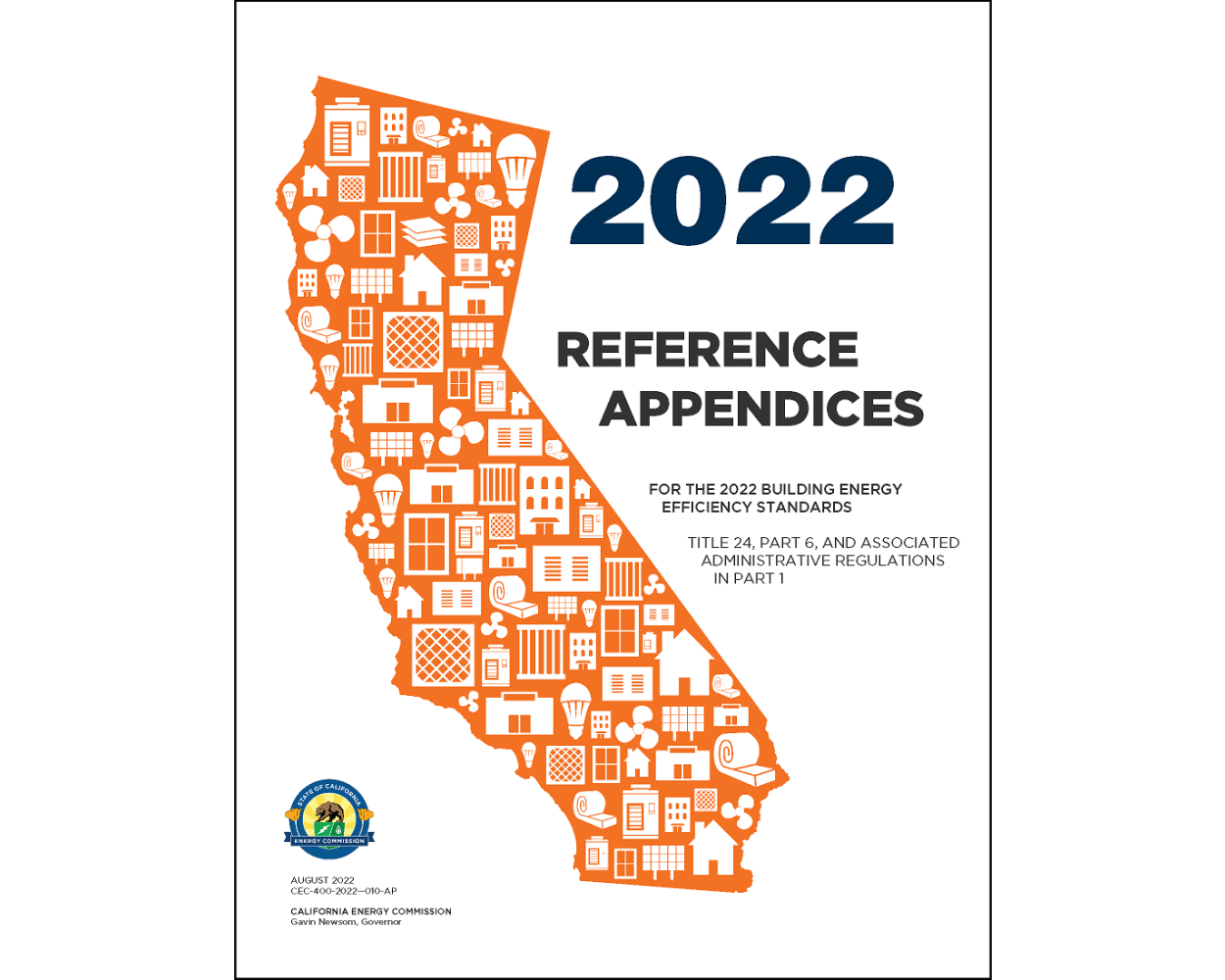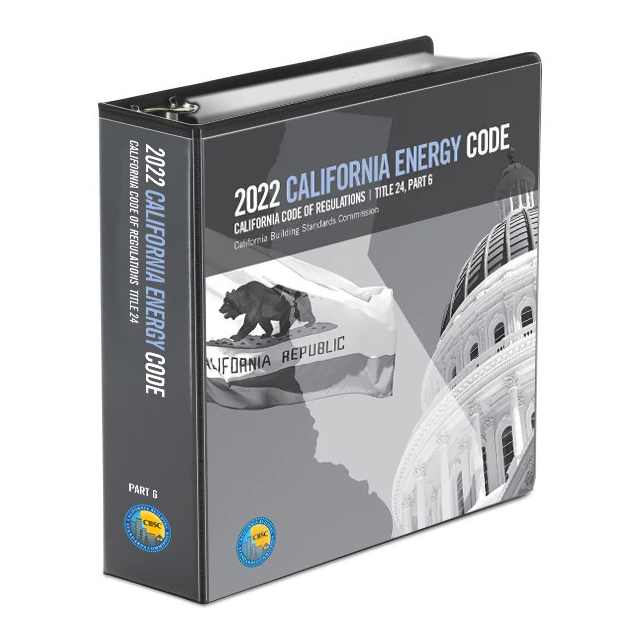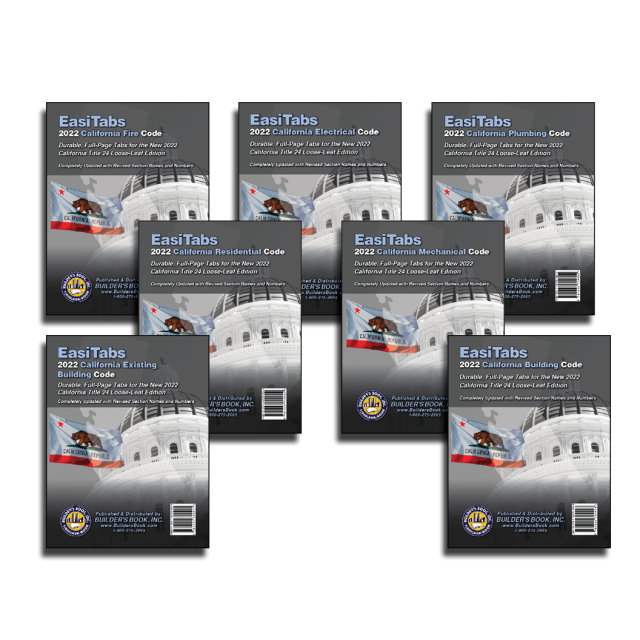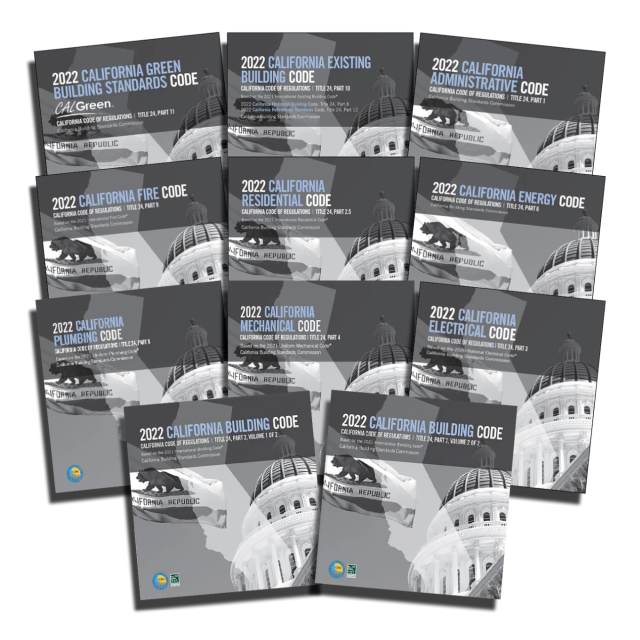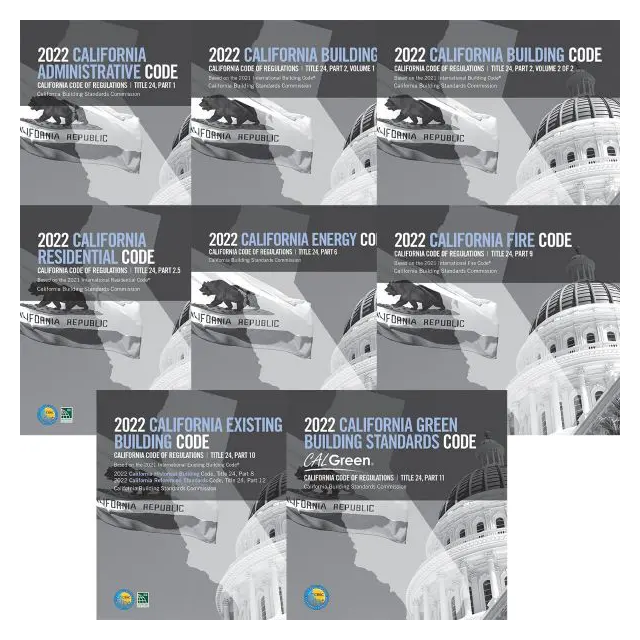2022 Building Energy Efficiency Standards for Residential and Nonresidential Buildings: Reference Appendices
2022 Building Energy Efficiency Standards for Residential and Nonresidential Buildings: Reference Appendices
Introduction:
In the dynamic landscape of construction, adherence to cutting-edge energy efficiency standards is paramount. The 2022 Building Energy Efficiency Standards for Residential and Nonresidential Buildings sets the stage for a sustainable future. This comprehensive guide, enriched with Reference Appendices, serves as the cornerstone for builders, architects, and regulators seeking to propel construction practices into a new era of energy consciousness. Let's unravel the key features, explore the diverse topics covered, understand the practical usage, identify the beneficiaries, and finally, appreciate the pivotal role of this guide in shaping a greener and more efficient construction ecosystem.
Key Features:
-
Energy and Water Efficiency: Embrace state-of-the-art standards encompassing energy and water efficiency, ensuring that buildings align with sustainable practices.
-
Indoor Air Quality: Navigate through indoor air quality requirements, prioritizing the well-being of occupants and fostering healthier living and working environments.
-
Newly Constructed Buildings: Tailored for new constructions, the standards provide a roadmap for integrating the latest energy-efficient technologies and practices.
-
Additions and Alterations: Extend the benefits to existing structures with guidelines for additions and alterations, facilitating a holistic approach to energy efficiency.
-
Reference Appendices: Augmenting the Energy Code, the Reference Appendices stand as a comprehensive reservoir of data and information crucial for builders striving for compliance.
Topics Covered:
-
Energy Efficiency Standards: Dive into meticulous standards designed to elevate energy efficiency in residential and nonresidential buildings, fostering resource conservation.
-
Water Efficiency Requirements: Explore guidelines promoting water conservation, contributing to sustainable practices and the responsible use of this precious resource.
-
Indoor Air Quality Regulations: Prioritize the health and well-being of occupants with regulations addressing indoor air quality, creating spaces that nurture and protect.
-
Data in Reference Appendices: Delve into the Reference Appendices, a treasure trove of data offering nuanced insights crucial for builders aiming to meet and exceed standards.
How to Use:
-
Compliance Roadmap: Use the guide as a comprehensive roadmap for compliance, ensuring that construction projects align seamlessly with the stipulated energy efficiency standards.
-
Data Mining in Appendices: Harness the power of the Reference Appendices for data mining, extracting valuable information to enhance the precision and efficacy of construction practices.
-
Integration in Planning: Architects and builders can seamlessly integrate the standards into project planning, infusing sustainability into the very fabric of design and execution.
-
Educational Resource: Leverage the guide as an educational resource in workshops, seminars, and training programs, fostering a culture of awareness and adherence to energy efficiency standards.
Who Can Benefit:
-
Builders and Contractors: Navigate the complex terrain of energy efficiency with clarity, ensuring compliance and contributing to sustainable construction practices.
-
Architects and Designers: Infuse designs with energy-conscious elements, creating structures that are not just aesthetically pleasing but also environmentally responsible.
-
Regulatory Authorities: Streamline regulatory processes with a comprehensive guide, fostering efficient evaluation and enforcement of energy efficiency standards.
-
Educational Institutions: Integrate the guide into curricula, providing students with practical insights into the latest advancements in energy efficiency in construction.
Conclusion:
As we navigate the complexities of the modern construction industry, the 2022 Building Energy Efficiency Standards for Residential and Nonresidential Buildings emerges as a guiding beacon. Enriched with the invaluable Reference Appendices, this guide doesn't just set standards; it propels the industry toward a future where energy efficiency is not a choice but a necessity. Builders, architects, regulators, and educators can collectively leverage this resource to redefine construction practices, creating spaces that are not just structures but sustainable ecosystems. In conclusion, this guide stands as a testament to the industry's commitment to a greener, more efficient, and environmentally conscious tomorrow.
__________________________________________________________________
The Energy Code contains energy and water efficiency requirements (and indoor air quality requirements) for newly constructed buildings, additions to existing buildings, and alterations to existing buildings.
Reference Appendices are adopted along with the Energy Code that contain data and other information that helps builders comply.
| Price | $94.95 |
|---|---|
| Customer Service | We're Here To Help! Call us anytime during our customer service hours... Monday through Friday - 8:30 am to 4:30 pm (Pacific) Order Questions:
TOLL FREE, 800-273-7375 (Outside the U.S. call 818-887-7828). Our Address: 8001 Canoga Avenue Canoga Park, CA 91304 US Phone: 800-275-2665 E-mail: sales@buildersbook.com
|
| Description | 2022 Building Energy Efficiency Standards for Residential and Nonresidential Buildings: Reference Appendices Introduction: In the dynamic landscape of construction, adherence to cutting-edge energy efficiency standards is paramount. The 2022 Building Energy Efficiency Standards for Residential and Nonresidential Buildings sets the stage for a sustainable future. This comprehensive guide, enriched with Reference Appendices, serves as the cornerstone for builders, architects, and regulators seeking to propel construction practices into a new era of energy consciousness. Let's unravel the key features, explore the diverse topics covered, understand the practical usage, identify the beneficiaries, and finally, appreciate the pivotal role of this guide in shaping a greener and more efficient construction ecosystem. Key Features:
Topics Covered:
How to Use:
Who Can Benefit:
Conclusion: As we navigate the complexities of the modern construction industry, the 2022 Building Energy Efficiency Standards for Residential and Nonresidential Buildings emerges as a guiding beacon. Enriched with the invaluable Reference Appendices, this guide doesn't just set standards; it propels the industry toward a future where energy efficiency is not a choice but a necessity. Builders, architects, regulators, and educators can collectively leverage this resource to redefine construction practices, creating spaces that are not just structures but sustainable ecosystems. In conclusion, this guide stands as a testament to the industry's commitment to a greener, more efficient, and environmentally conscious tomorrow. The Energy Code contains energy and water efficiency requirements (and indoor air quality requirements) for newly constructed buildings, additions to existing buildings, and alterations to existing buildings. Reference Appendices are adopted along with the Energy Code that contain data and other information that helps builders comply. |

